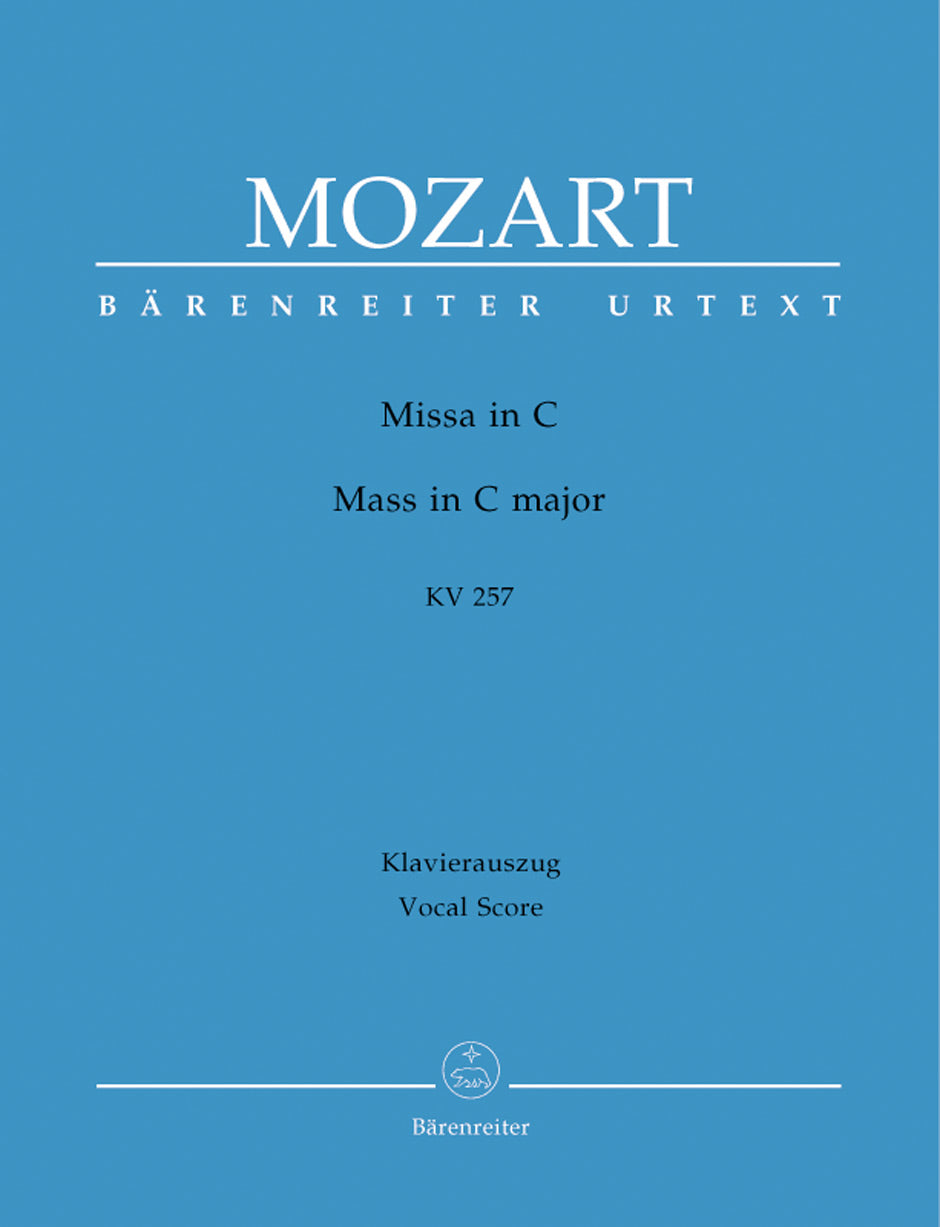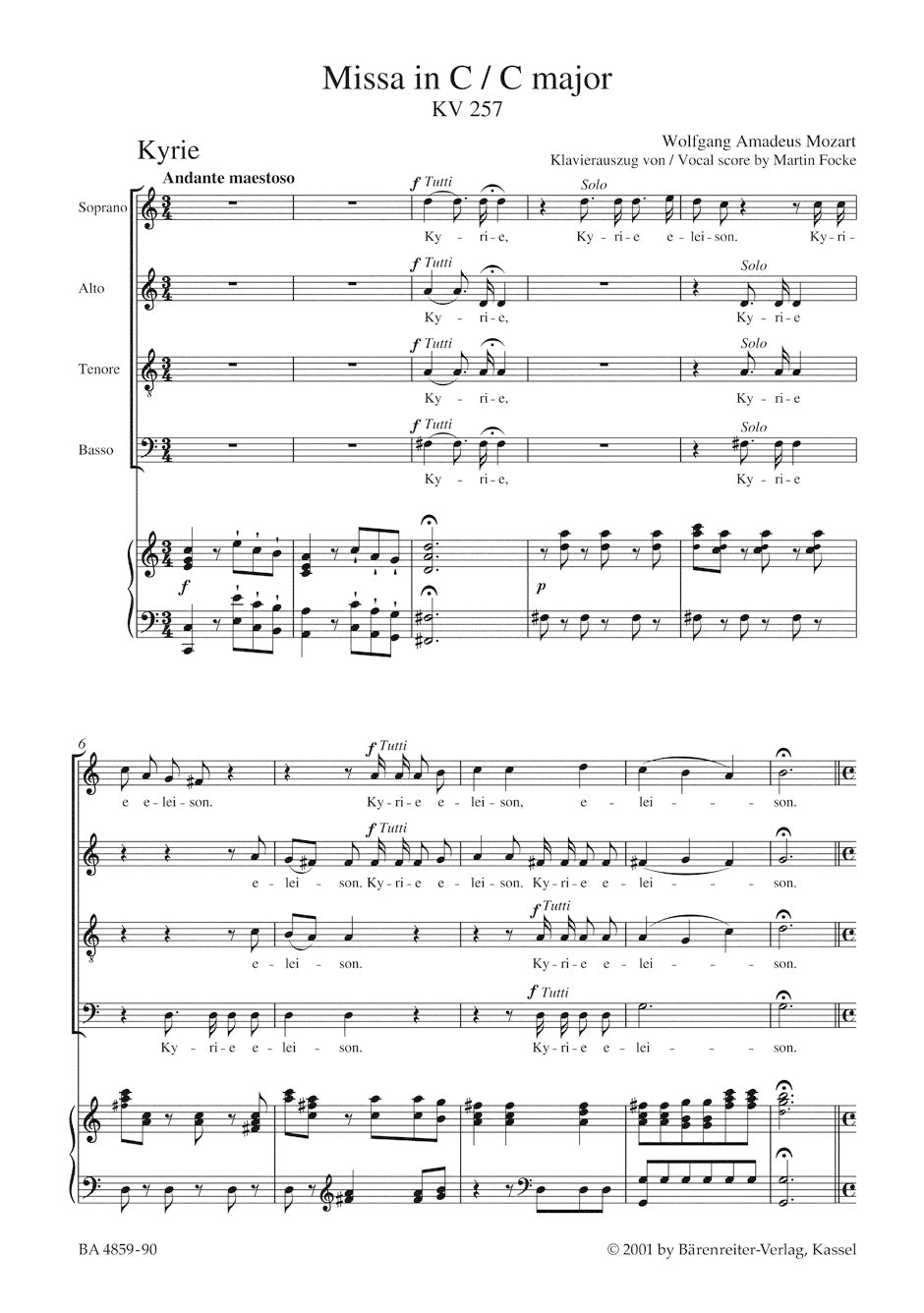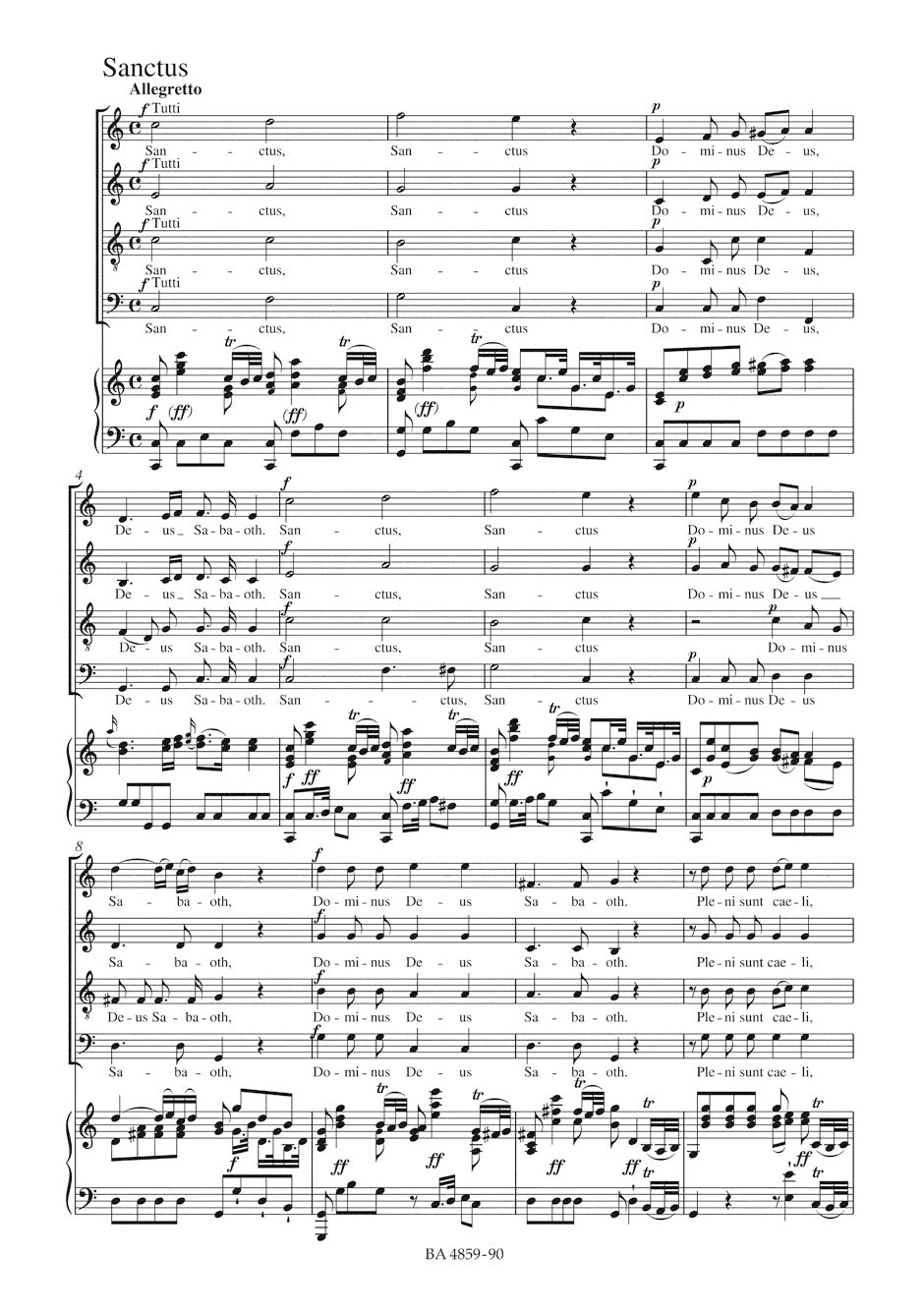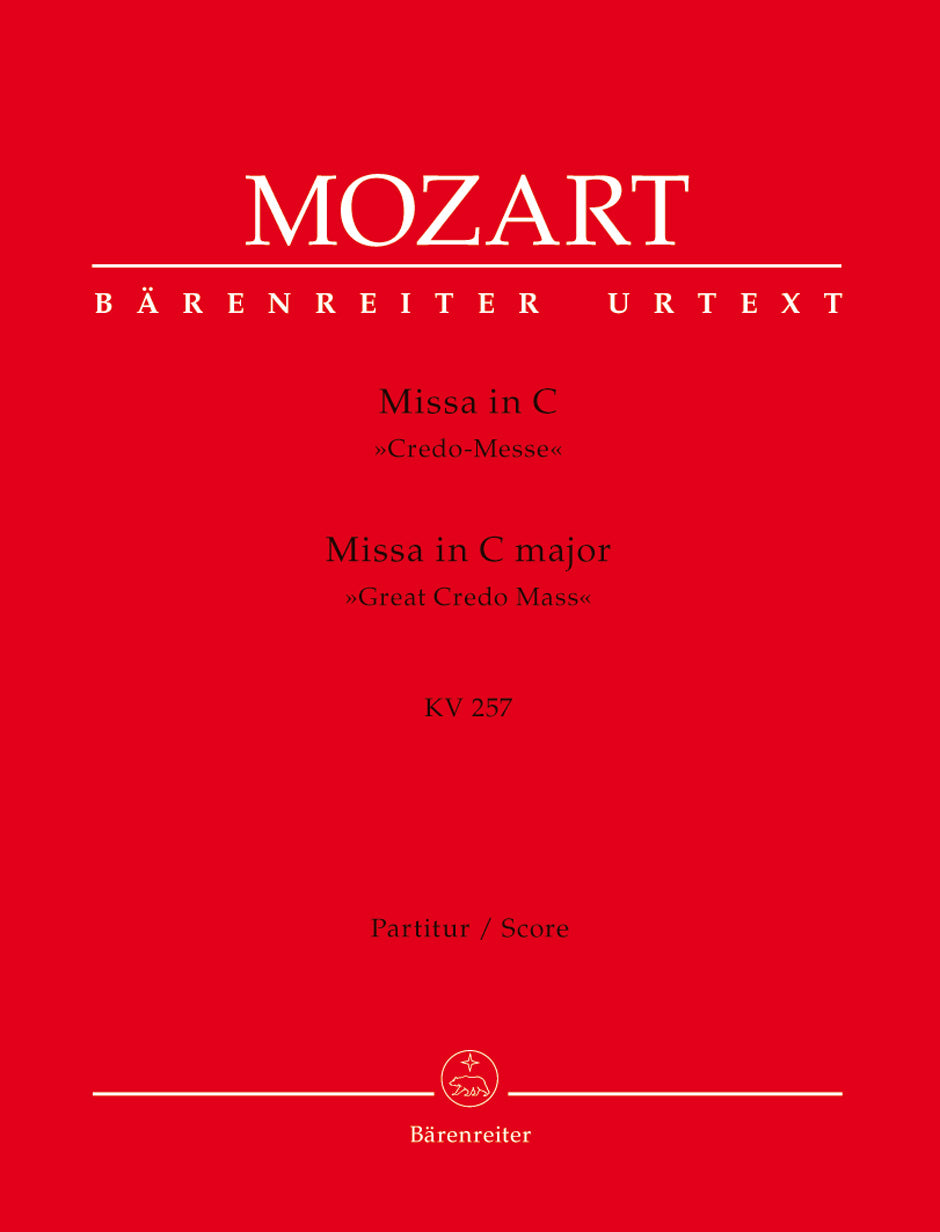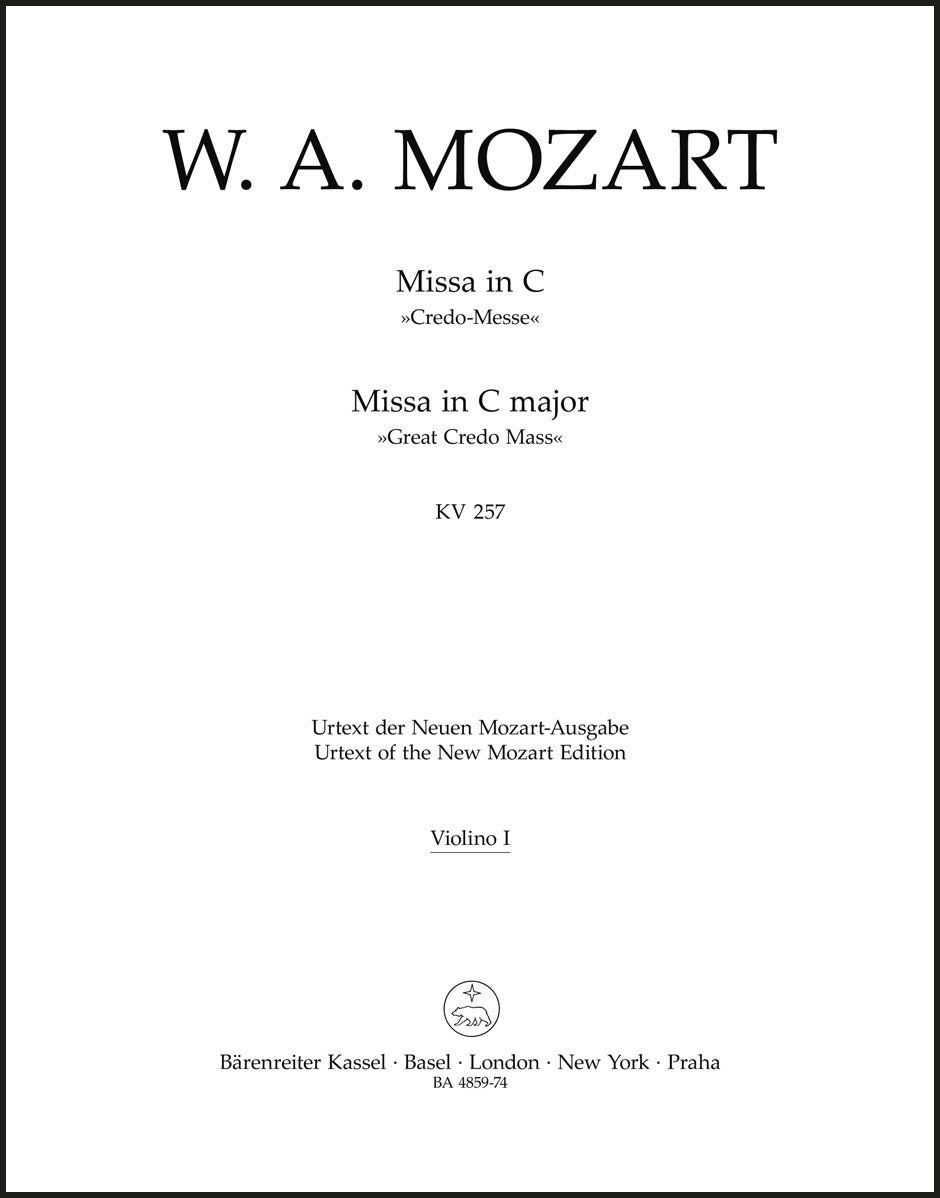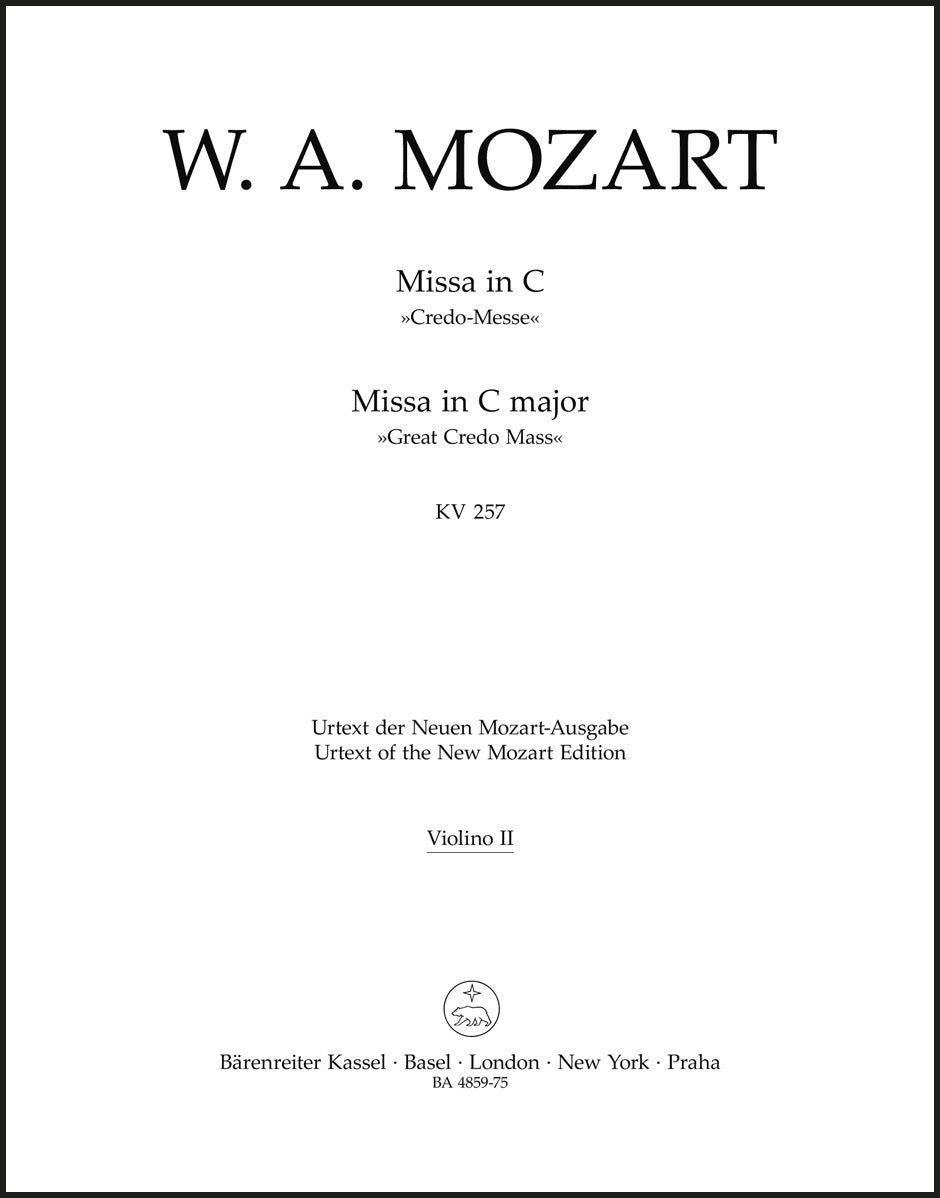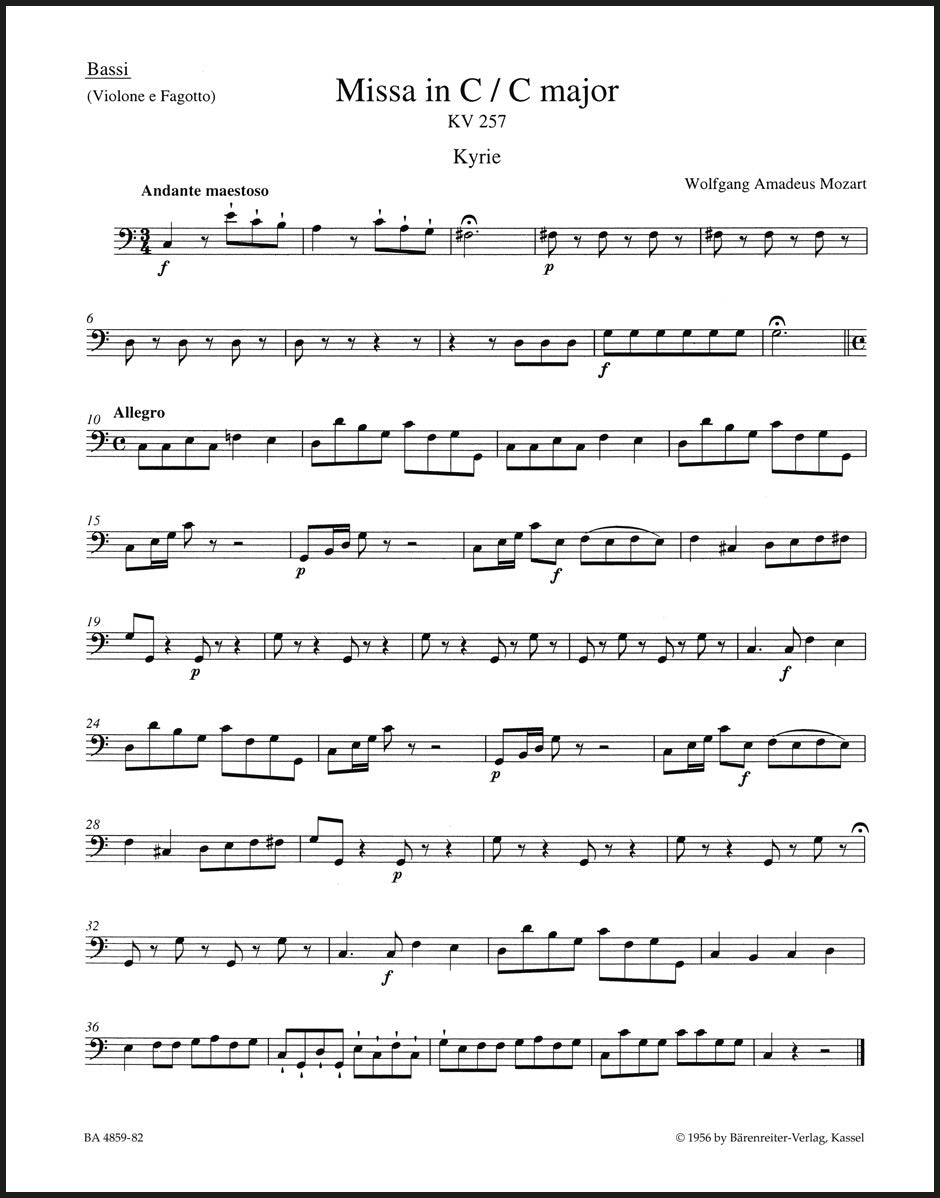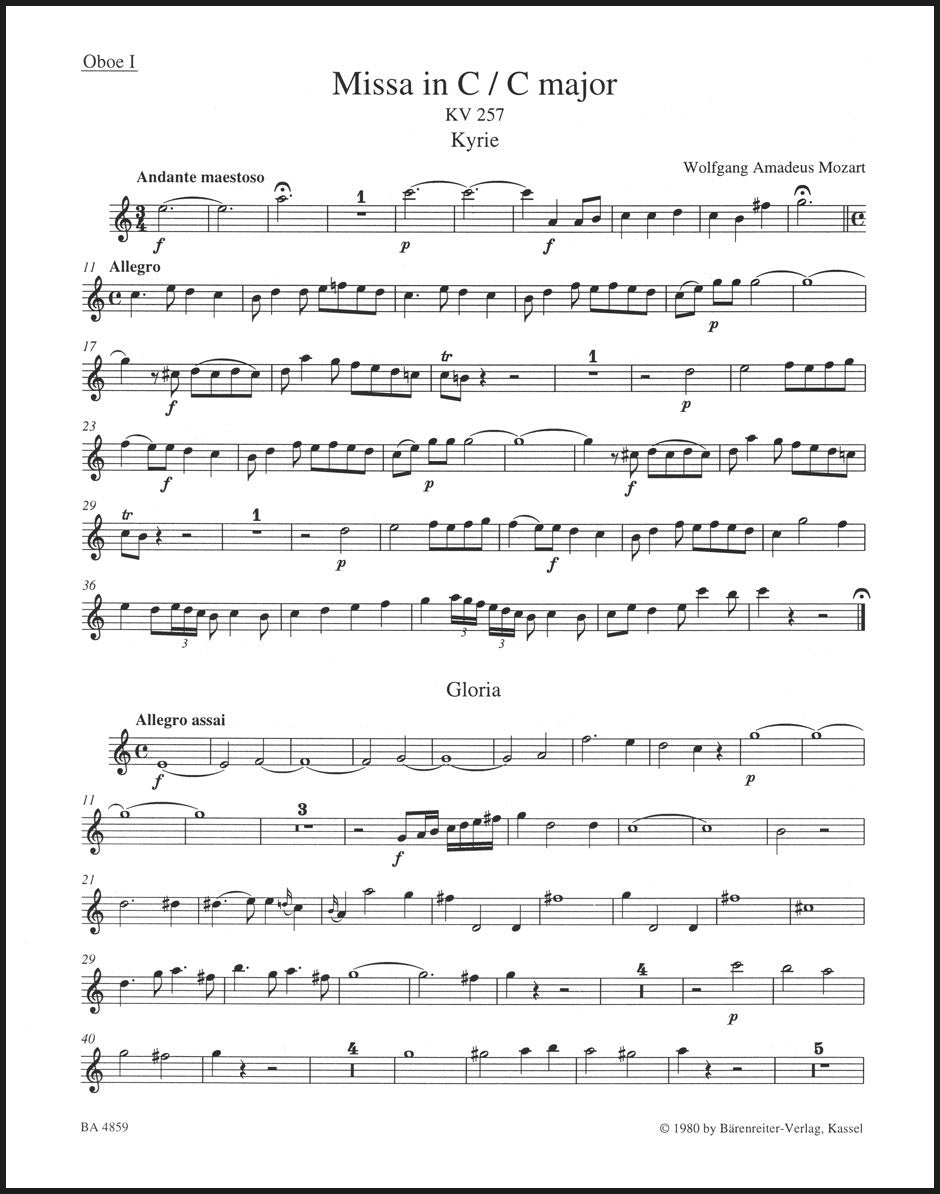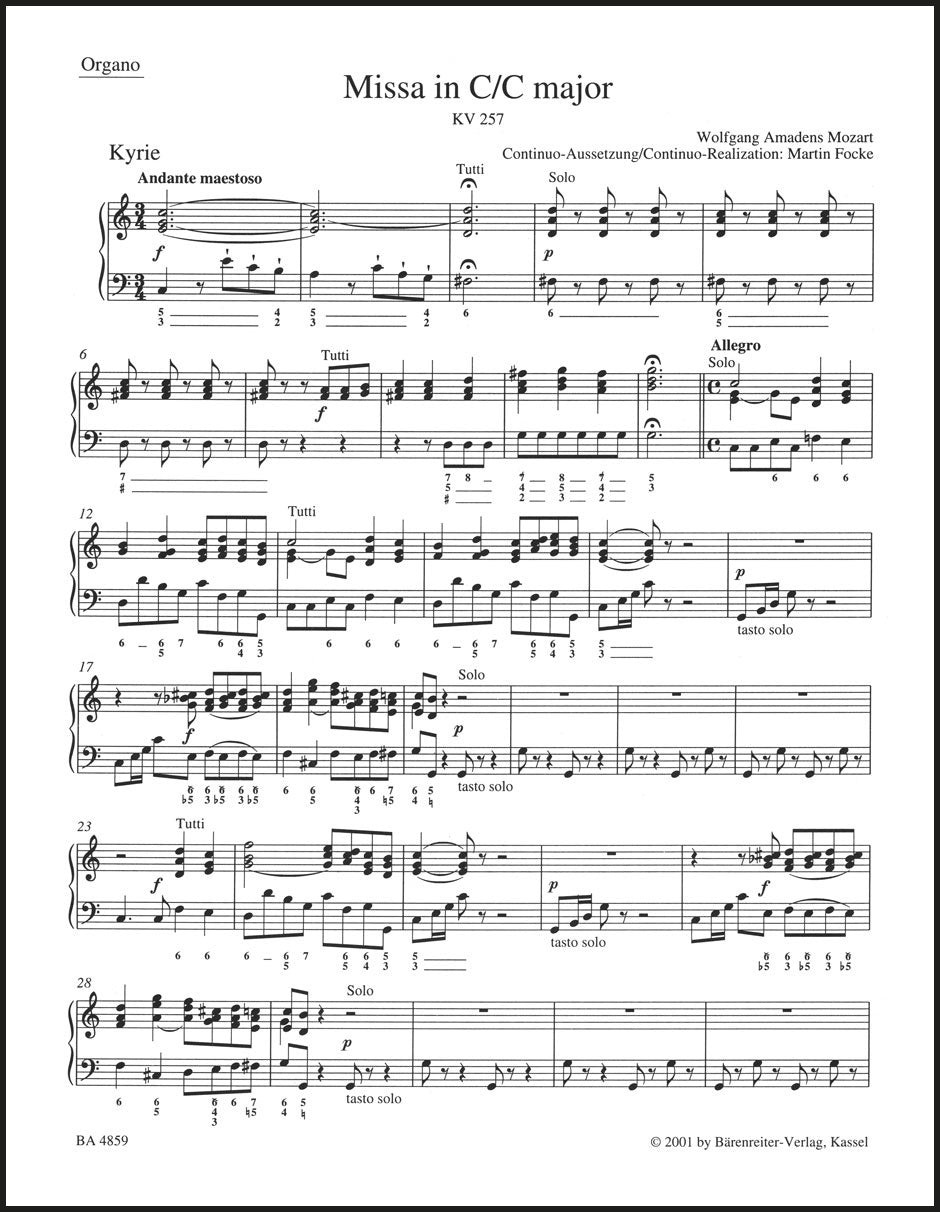Mozart: Missa in C Major, K. 257
"Great Credo Mass"
In stock and typically ships within 1 business day.
- Composer: Wolfgang Amadeus Mozart (1756-1791)
- Editor: Walter Senn
- Instrumentation (this edition): Piano Reduction, SATB Choir
- Originally for: SATB Choir, Orchestra
- Work: Missa in C Major ("Great Credo Mass"), K. 257
- Work Language: Latin
- ISMN:
- Size: 7.5 x 10.6 inches
- Pages: 61
- Urtext / Critical Edition
Description
Over time Wolfgang Amadeus Mozart‘s "Missa in C Major", K. 257 has been given many nicknames. This work, also known as the "Great Credo Mass" was referred to as "Missa longa" by Leopold Mozart due to its duration. Mozart usually liked to call works of this magnitude "Missa solemnis", but for unknown reasons, in the case of the "Great Credo Mass", he did not use this title. As the work was originally composed for the ordination of Salzburg Canon Ignaz von Spaur, Leopold also called the work "Spaur Mass".
The mass was composed in late 1776 or early 1777 in the usual baroque tradition where the three trombones are set Tutti colla parte with the alto, tenor and bass parts.
The spatial separation of singers in the Salzburg Cathedral is somewhat similar to the polychoral style, in which solo and choir ensemble performed separately with one organ each. The soloists along with the first organ formed the "concerto", while the choir and the second organ took on the "ripieno" role.
Walter Senn's edition is largely based on the autograph score, as well as on a set of autograph parts that was added and corrected by Wolfgang Amadeus and Leopold Mozart at a later time.
Publishers use a lot of words to describe what they sell, and we know it can be confusing. We've tried to be as clear as possible to make sure you get exactly what you are looking for. Below are descriptions of the terms that we use to describe the various formats that music often comes in.
Choral Score
A score for vocalists that only contains the vocal lines. The instrumental parts are not there for reference. Generally, cheaper than a vocal score and requires multiple copies for purchase.
Facsimile
Reproductions of the original hand-written scores from the composer.
Full Score
For ensemble music, this indicates that the edition contains all parts on a single system (there are not separate parts for each player). In larger ensembles, this is for the conductor.
Hardcover
Hardbound. Generally either linen-covered or half-leather.
Orchestral Parts
Similar to a wind set, this is a collection of parts. In the case of strings, the numbers listed are the number of copies included, though generally these are available individually (often with minimum quantities required).
Paperback
When publishers offer multiple bindings (e.g. hardcover) or study scores, this is the "standard" version. If you're planning to play the music, this is probably what you want.
Performance / Playing Score
A score of the music containing all parts on one system, intended for players to share. There are not separate parts for each player.
Set of Parts
For ensemble music, this indicates that there are separate individual parts for each player.
Solo Part with Piano Reduction
For solo pieces with orchestra, this is a version that contains a piano reduction of the orchestra parts. For piano pieces, two copies are typically needed for performance.
Study Score
A small (think choral size) copy of the complete score meant for studying, and not playing. They make great add-ons when learning concertos and small chamber works.
Vocal Score
A score prepared for vocalists that includes the piano/organ part or a reduction of the instrumental parts.
Wind Set
For orchestral music, this is a collection of wind and percussion parts. The specific quantities of each instrument are notated.
With Audio
In addition to the printed music, the edition contains recordings of the pieces. This may be an included CD, or access to files on the internet.
With / Without Fingering (Markings)
Some publishers prepare two copies - a pure Urtext edition that includes no fingering (or bowing) suggestions and a lightly edited version that includes a minimal number of editorial markings.

